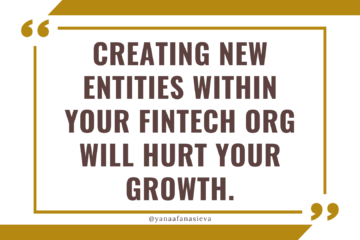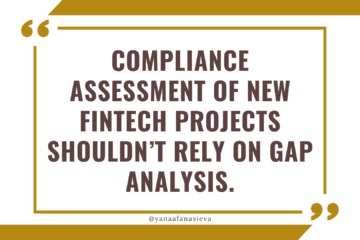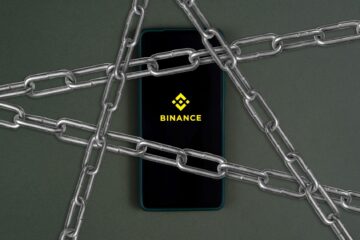SEC vs Ripple, EOS, and Telegram: What Do They Have in Common?
On December 21st, 2020, the SEC filed a lawsuit against Ripple, accusing the company of illegally offering securities without proper registrations and declarations as required by the US securities laws.
In recent years, the SEC has ruled that Bitcoin and Ethereum were not securities, mainly because they are decentralized with no person or company in control and therefore nobody can make any credible or legitimate promises about their future value or profitability.
So, what makes (potentially – let’s assume innocent before proven otherwise) XRP security?
The main argument the SEC uses in their complaint against Ripple is that XRP was consistently marketed and offered to the general public as an investment opportunity, where token holders would be able to benefit from the token increasing in value, which (potentially) makes XRP an investment contract (as per famous Howey test decision of the US Supreme Court) or security.
Never mind that the Supreme Court Case goes back to the 1946 story (I know, Americans are so much fun to work with…)
The story relates to a case where a citrus farm Howey company in Florida decided to rent out a part of its land to speculative investors, and instead of a fixed rent, they decided to pay to their tenants in some form a profit-sharing, related to the success of their citrus farming business. Then as it usually happens with Americans, they disagreed on who owes what to whom and decided to waste their time and money on lawyers.
The case ended up in the Supreme Court that concluded that this lease contract was not in fact a lease contract, but rather it was an investment contract, because tenants made their investment decision to rent this land, not because of the value of the land, but rather because they expected to benefit from the work and efforts and commercial success of others (e.g. the citrus farm).
80 years later, for some strange unexplainable reasons, this citrus farm case became a precedent for assessing whether or not some digital tokens are investment contracts – and therefore – securities.
It is true (unfortunately for the Ripple team) that they have often promoted XRP as an asset that would increase in value and therefore has investment potential.
At the same time, there are many arguments supporting the idea that Ripple token is not a security, namely:
- Ripple holders do not directly benefit from the profitability of Ripple as a company and most statements or future value promises made by Ripple executives are not legally enforceable (though promiscuous).
- Most people who purchased XPR did not even purchase it from Ripple company and have no contractual relationship with Ripple.
- The market value of XPR does not have a direct correlation with the profitability of Ripple as a company and no direct correlation with the efforts of Ripple employees.
The SEC in their complaint brought about many other examples of why or how Ripple carried out an illegal security offering, which I find rather questionable:
- The SEC says that offering XPR to developers as a part of the bug bounty program is a securities offering. I would say this is clearly a work/service contract because it was a compensation for specific service done.
- The SEC tries to interpret statements such as “building global payments platform” or “a growing number of users” and many similar growth plans as an attempt to “promise investment returns”, which IMHO, they have not argued very well.
But at the end of the day, I seriously doubt that this matter will win purely on legalistic grounds.
The most prominent case of SEC “forgiveness” is the case of EOS settlement in late 2019, where after EOS raised about ~$4 billion via “unlawful” securities offering, they only had to pay $24 million in fines. You might be wondering: if they did something wrong, why they paid so little (and are allowed to continue with their offering), and if they did not do anything wrong, why did they agree to pay at all, right?
I personally believe that the following factors made EOS vulnerable (though, they were not a US company):
- their size,
- their obvious US presence (US-based employees and team members, advertising billboards at TimeSquare, marketing activities at US-based conferences… followed by the creation of the US-based legal entity),
- clear intention to focus and be present in the US market
If you look at the settlement documents signed by the Block.one, it’s clear that in exchange for their settlement, they received certain rights for their token to continue to be offered to qualified US investors, furthermore, Block.one can continue (legally) fundraising in the US if they wish to do so. To me, it means that the fine (=settlement) was not for the past wrongdoings, but rather it was a payment to secure a fresh start. In essence, they paid for being able to move forward into the future. The price of the EOS token increased by ~15% after the announcement went out, so the market viewed it as good news.
What was so special about EOS regulatory strategy – they played extremely nice good citizens, they collaborated with the SEC, they promised to make changes to their T&Cs and disclosures and they never engaged in public fights.
Seriously people – rule #1 of any regulatory relationships is TO PLAY NICE… but why is it so hard for so many founders to follow????
The opposite example is Telegram (also a non-US but high profile project). Telegram was going back and forth with the SE for about 2 years, but Unlike the EOS team, the parties could not find a mutual agreement, so SEC had to go to court and filed an emergency action for Telegram Group, requesting them to stop the distribution of Gram tokens.
So – what went wrong for Telegram?
- We can debate forever whether Grams were securities or not, and it’s completely irrelevant. SEC did not really go after Telegram over the securities definition.
- The SEC says that once Gram investors receive the tokens, they can resell them to the open market. SEC stated concern was around the secondary market, where individuals with no accreditation could buy Grams without having a clear view of the risks.
- Telegram did not play nicely – they preferred an open fight over principles, and it will be costly and most likely useless.
Key lessons:
- Either file for Reg D exemption or don’t take lion portion of your funds raised from US investors (those investors who really want to invest can set up subsidiaries or SPVs in other countries, it’s such a standard procedure).
- Build-in white-listing/gating features for future token distribution within your smart contract in such a way that you can gate, review, and white-list secondary market participants. If you do that, you will have a feature that will allow you to block unwanted token holders (e.g. non-qualified retail investors or persons from certain countries that cause you a headache).
- Don’t pick up fights with authorities over principles and fair justice – collaborate, compromise, and play nicely.
P.S. If you are in the process of a FinTech or Blockchain license application or planning some other regulatory projects, you are welcome to join this value-packed 2-hour FinTech Licensing Workshop on February 23rd and February 24! Have a look at the agenda!


